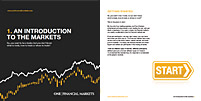

Government shutdown fears rattle US stocks, but history shows upside
Investing.com-- The U.S. government is facing a potential shutdown at the end of September, with lawmakers having flagged little progress towards reaching consensus over a spending bill.
With Congress now facing less than five days to approve and pass a spending bill, analysts see a shutdown as a likely scenario. A swathe of government services are expected to be suspended, while thousands of government employees are also set to be furloughed without pay.
Concerns over a potential shutdown kept U.S. stock indexes trading lower over the past week, although a bulk of this weakness was also driven by fears of a hawkish Federal Reserve. The S&P 500 is trading down 2.7% over the past seven days.
But while a shutdown is expected to provide more headwinds to the U.S. economy- especially as it grapples with higher-for-longer interest rates and sticky inflation, historical data shows that stock markets have performed well during the three shutdowns over the past 10 years.
S&P 500 has consistently gained during past shutdowns
In the 2018-2019 shutdown, which was the longest in U.S. history at 35 days, the S&P 500 sank 7% in the week before the shutdown. It then slid another 2.7% on the day the shutdown was announced.
But the index then rebounded more than 11% over the duration of the shutdown.
Earlier in January 2018, the U.S. government was shut down for two days amid disagreements over a spending bill. The S&P 500 rose 0.8% in the week before the shutdown, and with the event only lasting one weekend, the index rose sharply in the following week and hit a lifetime high at the time.
In 2013, during a 16-day shutdown in October, the S&P 500 fell as much as 2.9% in the first week of the shutdown. But the index then rebounded nearly 5% over the next nine days, and went on to notch record highs in the coming week.
Even earlier, during a series of shutdowns through late-1995 and early-1996, the S&P 500 had risen more than 4%. The index had then gone on to scale record highs in a month after the end of the December 1995 to January 1996 shutdown.
2023 shutdown still presents economic risks
But while stock markets may see strong performances despite the shutdown, analysts warned that the U.S. economy faced a greater risk from such a disruption. The shutdown also comes at a time when the U.S. economy is still reeling from the effects of a sharp rise in interest rates over the past year.
Goldman Sachs analysts have said that a government-wide shutdown is expected to reduce U.S. growth by about 0.15 percentage points for each week it lasts, or about 0.2 percentage points when considering the impact on the private sector.
Fears of a shutdown come only a month after the U.S. government narrowly avoided a potential default by passing a widely contentious spending bill.
“Unlike the debt limit… a shutdown would be much more manageable from a macroeconomic perspective,” Goldman Sachs Chief U.S. Political Economist Alec Philips wrote in a note.
“However, compared to the debt limit, the less severe economic effect of a shutdown also makes it more likely that Congress fails to act in time.”
Ratings agency Moody’s said on Monday that a government shutdown is likely to harm the U.S. credit rating. The warning also came just a month after Fitch downgraded the U.S. rating, citing hurdles to governance from increasing polarization between Republican and Democratic policies.
Begin trading today! Create an account by completing our form
Privacy Notice
At One Financial Markets we are committed to safeguarding your privacy.
Please see our Privacy Policy for details about what information is collected from you and why it is collected. We do not sell your information or use it other than as described in the Policy.
Please note that it is in our legitimate business interest to send you certain marketing emails from time to time. However, if you would prefer not to receive these you can opt-out by ticking the box below.
Alternatively, you can use the unsubscribe link at the bottom of the Demo account confirmation email or any subsequent emails we send.
By completing the form and downloading the platform you agree with the use of your personal information as detailed in the Policy.






